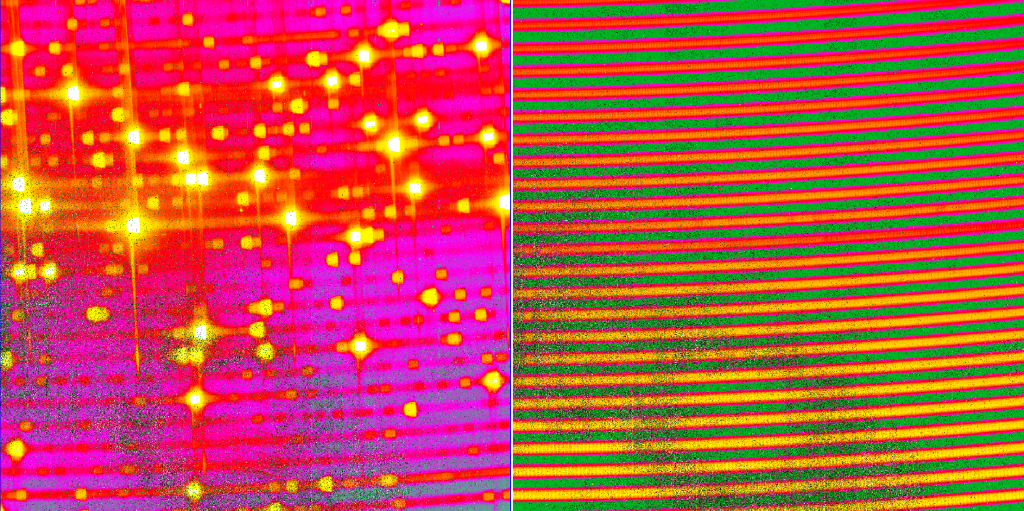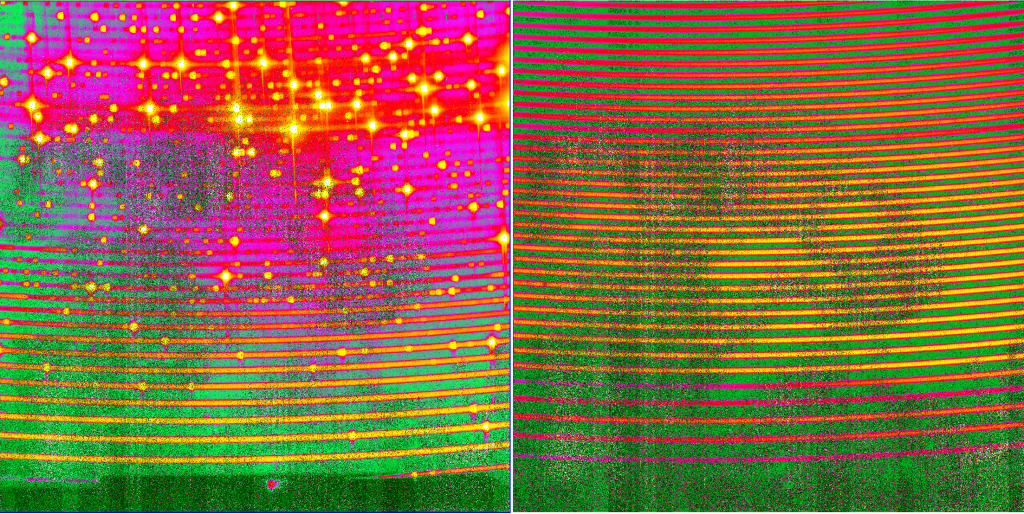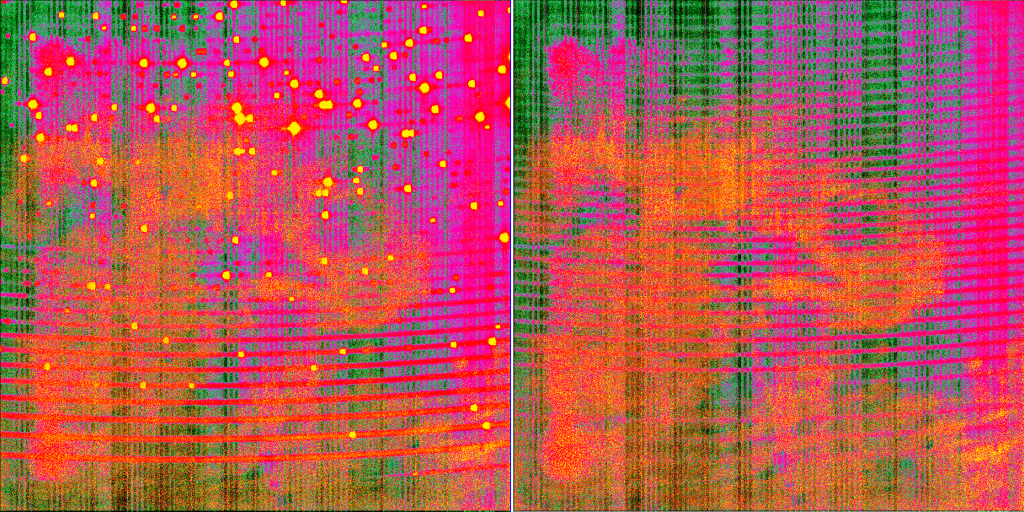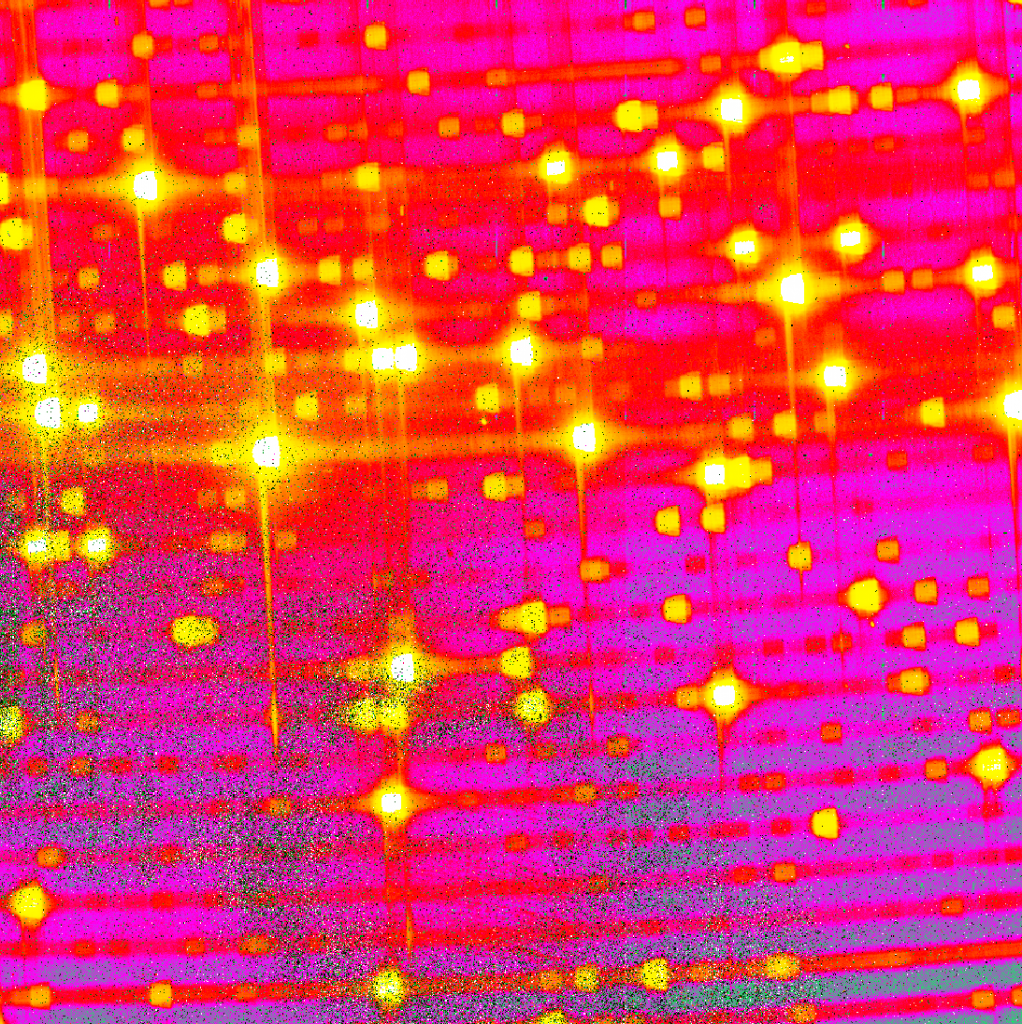2017 March: First SPIRou lab images
SPIRou just saw first lab light at IRAP/OMP
One week after starting the cooling cycle, the spectrograph bench, optics and test H2RG detector reached the goal temperature of 85 K, allowing the team to collect the first lab images.
Light from different lamps was injected in the cryogenic spectrograph through optical fibers fed from the SPIRou calibration unit.
Images taken with a Thorium-Argon hollow-cathode lamp and with the SPIRou Fabry-Perot radial-velocity reference revealed the cross-dispersed near-infrared spectra of the incoming light, featuring as much as 37 different orders recorded on the 2Kx2K detector. Several sets of images were taken in different configurations of the Hartmann mask, a cryogenic device allowing us to mask half of the beam prior to the spectrograph camera to assess the spectrograph defocus. These first images show that the spectrograph is out of focus by about 1 mm. For the second cryogenic cycle, we will aim at putting the spectrograph optics and detector at their proper focus position to within better than 0.1 mm. Even though defocussed, the first SPIRou lab images of the Thorium-Argon hollow-cathode lamp reveal identifiable spectral lines, demonstrating that there is no major issue with the various instrument components.
To be usable, images collected with the H2RG test detector must be acquired and processed with specific software in order to correct for most systematic effects induced by the detector (e.g., dark current, multiple readout chains, cosmetics). The final 4Kx4K H4RG SPIRou detector will feature much better cosmetics and performances than the current test 2Kx2K H2RG detector.
These acquisitions were performed by the IRAP/OMP team, under the supervision of JF Donati, the SPIRou Principal Investigator, and with help from Etienne Artigau from Université de Montréal (UdeM) for processing images of the test H2RG detector.






